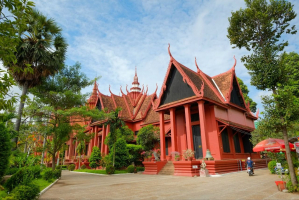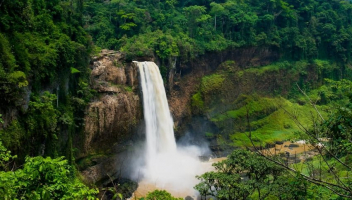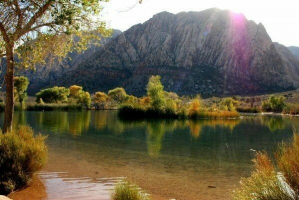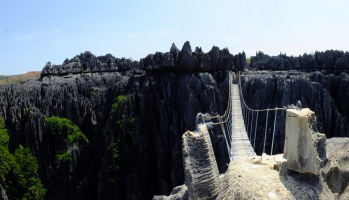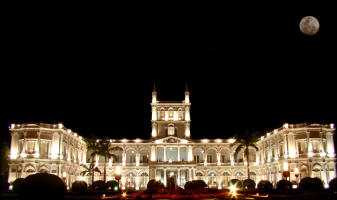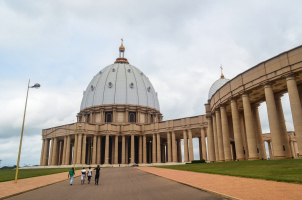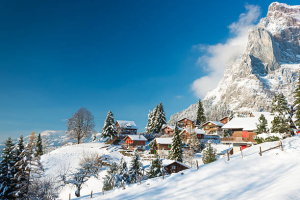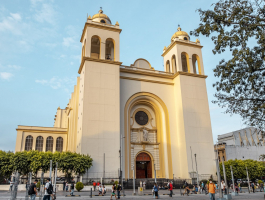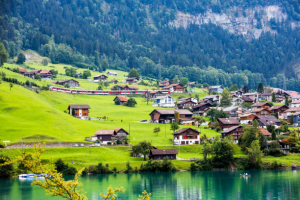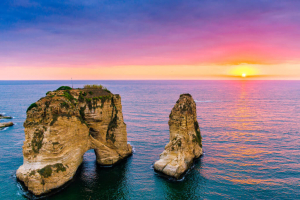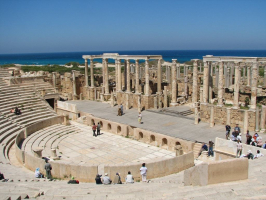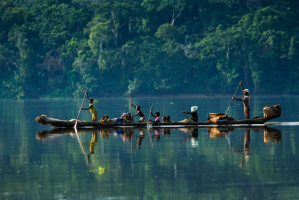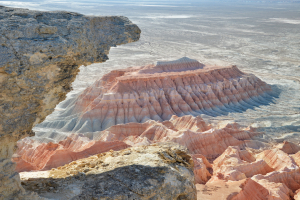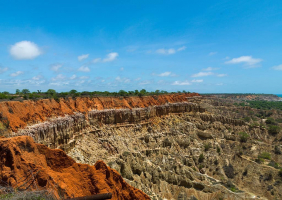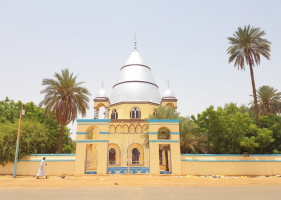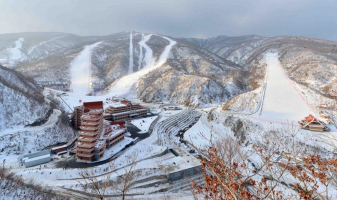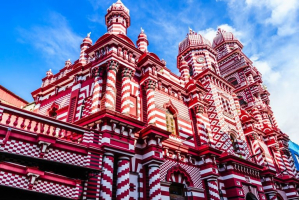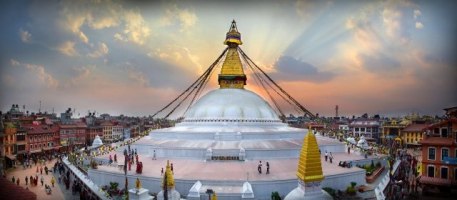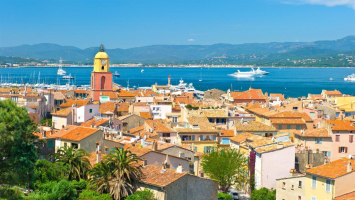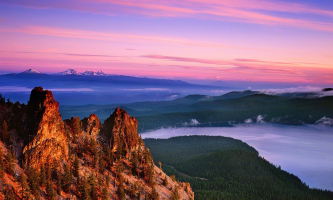Top 13 Best Places to Visit in Cambodia
Cambodia is diverse and provides a wide range of activities for visitors to swiftly fill their schedules. The nation offers it all, from magnificent temples ... read more...and religious monuments to a rich legacy and culture to unique fauna and breathtaking eco-tourism areas. Cambodia continues to straddle the line between tourist hub and unexplored eastern destination, and it is peppered with a plethora of amazing sights, vistas, and experiences. Let's have a look at the greatest spots to visit in Cambodia.
-
From the ninth until the fourteenth century, Angkor was the capital of the Khmer Empire. As a result, it is rich in historical riches, making it one of Southeast Asia's most important archaeological sites.
A thousand temple ruins can be discovered spread throughout farmlands and rice fields. These include the world's biggest single religious building, Angkor Wat, the Bayon temple at Angkor Thom with its myriad of gigantic stone faces, and Ta Prohm, a Buddhist temple ruin entangled with tall trees. Many of the temples at Angkor have been reconstructed, making the massive complex one of the marvels of the ancient world while also providing an excellent glimpse into Khmer history.
Among these is the well-known Angkor Wat temple, the world's biggest single religious edifice. The sunrise from behind the temple's distinctive towers is an amazing spectacle that is well worth the early morning wake-up call. However, don't expect to have the temple all to yourself because this is peak season when crowds of other early risers travel here to catch this wonderful moment.
Angkor saw significant religious shifts during its lengthy history, changing from Hinduism to Buddhism multiple times. It has become a symbol of Cambodia, featuring on its national flag, and is one of Southeast Asia's most popular tourist destinations.
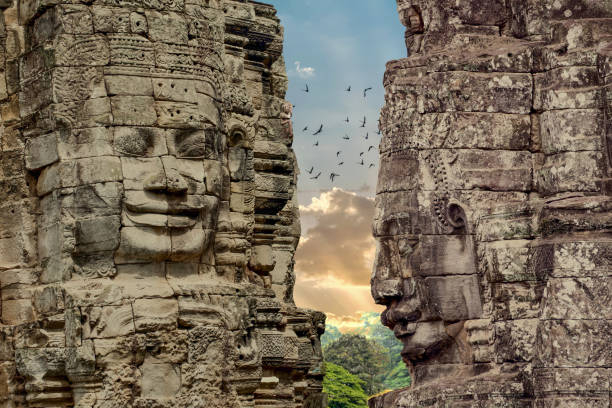
Angkor 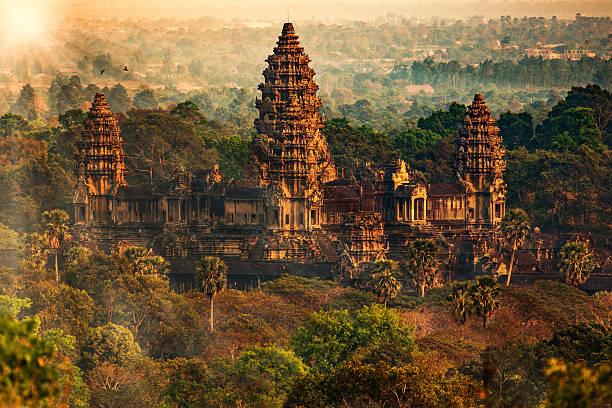
Angkor -
Cambodia's capital since French colonial days has been Phnom Penh, the country's largest metropolis. Phnom Penh, formerly known as "the gem of Asia," is regarded as one of the most beautiful of the towns established by the French in Indochina, despite the fact that the city is still recuperating from war and revolution. Today, French influence may still be found. The city, which is located on the Mekong River, dates back to the 15th century.
The Royal Palace, the house of Cambodia's royal family, and the Silver Pagoda, which is coated in 5,000 silver tiles and has a life-size gold Buddha adorned in diamonds, are among the top attractions. The night market, also known as Phsar Reatrey, is a great spot to buy handcrafted handicrafts and souvenirs.
Before the conflict in the 1970s, Phnom Penh was known as the "Paris of the East," with gorgeous white facades intermingled with temples (wats) dating back millennia. Though the Khmer Rouge dictatorship is no longer in power, the roughness of Phnom Penh is slowly fading. One of the city's most appealing features is that it has not been westernized to the extent that other of its surrounding nations have, providing a more authentic Southeast Asian experience.
Of course, there are more melancholy sights in Phnom Penh that commemorate the Khmer Rouge regime's atrocities, such as the Tuol Sleng Genocide Museum and the famed Killing Fields of Choeung Ek. The Killing Fields feature 129 mass graves and a memorial stupa with the skulls of almost 8,000 victims who were slaughtered there.
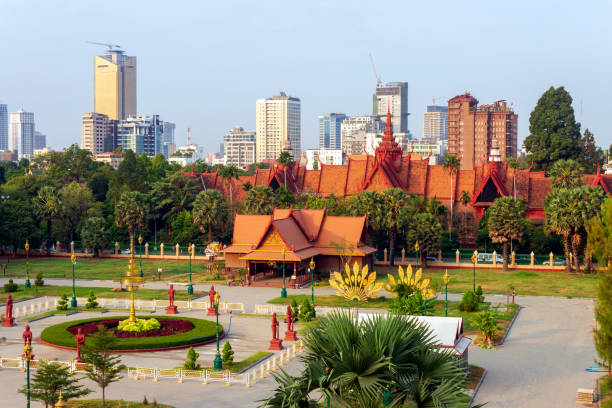
Phnom Penh 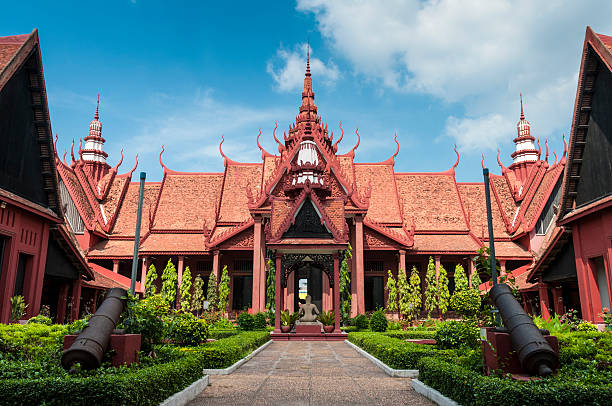
Phnom Penh -
Siem Reap is the capital and main city of Siem Reap Province in northern Cambodia, as well as the second-largest city in Cambodia. In the Old French Quarter and surrounding the Old Market, Siem Reap contains French colonial and Chinese-style buildings. Museums, traditional Apsara dance performances, a Cambodian cultural village, souvenir and handicraft shops, silk farms, rice terraces in the countryside, fishing villages and a bird sanctuary at Tonlé Sap, as well as a cosmopolitan drinking and dining scene, can all be found in the city.
Siem Reap (meaning "Siam Defeated") is without a doubt Cambodia's fastest-growing city, serving as a little beautiful gateway town to the world-famous Angkor monuments. Siem Reap has grown into a prominent tourist destination as a result of its Cambodian attractions.
Siem Reap, a lively and bustling city, is where most visitors to Cambodia will stop to see the magnificent temple complex of Angkor Wat. Siem Reap has a diverse range of hotels, from numerous 5-star hotels to hundreds of inexpensive guesthouses, as well as a diverse range of restaurants serving a variety of cuisines.
You may explore an ancient town full of exquisite French homes and charming Chinese stores, all interrupted by the intoxicating bustle of Psah Chas market, where you should try the sizzling noodle soups. Among the museums are the depressing Cambodia Landmine Museum and the War Museum.
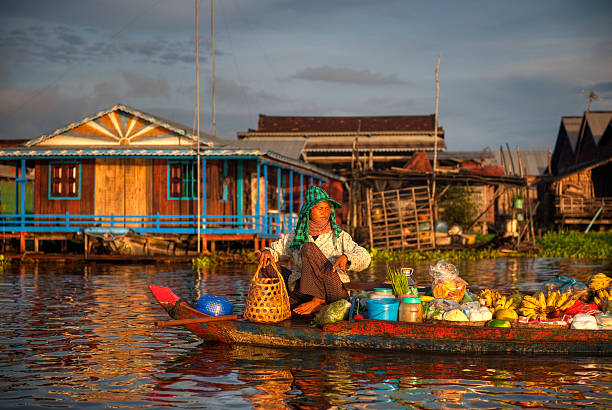
Siem Reap 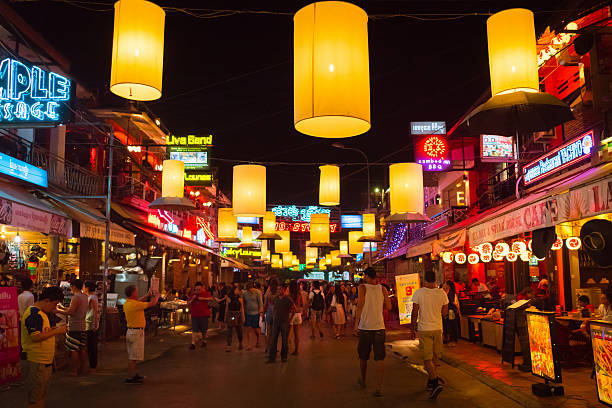
Siem Reap -
Koh Ker is a secluded archaeological site in northern Cambodia, around 120 kilometers from Siem Reap and the Angkor Wat temple complex. It is a jungle-filled, scarcely inhabited region. In an 81-square-kilometer protected region, more than 180 sanctuaries were discovered. Tourists may only visit approximately a dozen monuments because the majority of the sanctuaries are concealed in the forest and the entire region has not been properly demined.
In such a short period of time, very beautiful buildings and massive sculptures were built. Prasat Thom, a 30 meter (98 ft) tall temple pyramid towering far above the surrounding forest, dominates the site.
Koh Ker was one of Cambodia's most distant and inaccessible temple locations for over a millennium, having been abandoned by the forest. This has altered as a result of recent de-mining and the building of a new toll road.
The vast, towering temples of Koh Ker replace the older brick-built towers (which may still be seen at some of the earlier Lingapura sites) with gigantic laterite buildings and significant sandstone use. Entranceways are becoming increasingly intricate, as seen by the royal temple complexes Prasart Krahom and Prasart Thom, and numerous, concentric sanctuary or courtyard walls are a prominent feature.
The sculpture was also creative, with gigantic sandstone statues and the insertion of big, carved stone pediments above the door lintels representing the Koh Ker style. Unfortunately, due to the remoteness of the location and the collectability of such pictures, much has been plundered throughout time, however stunning specimens may still be viewed in the state museums of Phnom Penh and Siem Reap.
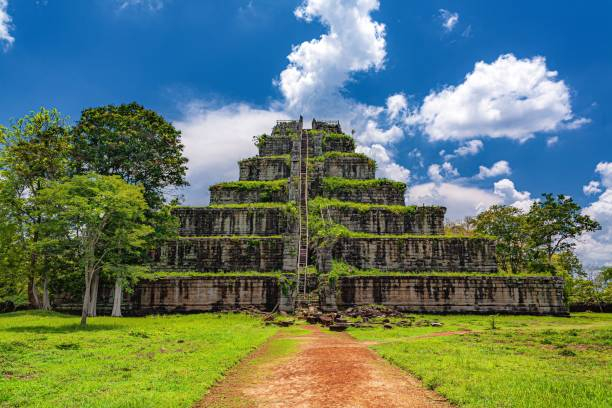
Koh Ker 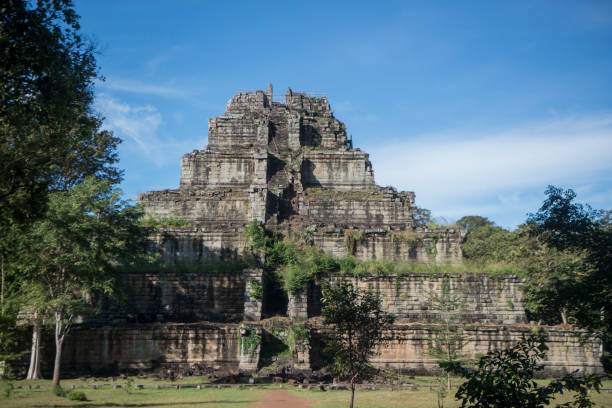
Koh Ker -
Sihanoukville (also known as Kampong Som or Kampong Saom) was established in 1964 as Cambodia's only deep-water port. It is gradually being renovated as a tourist destination, but despite the promise of major Malaysian investment – a casino is planned for Naga Island – visitor numbers remain relatively low.
Sihanoukville, about 4 hours by bus from Phnom Penh, is the country's primary beach resort for both residents and tourists. It has a variety of beaches, most of which are a short walk from the downtown hotels and hostels where the majority of visitors stay.
Though it was originally a relatively tranquil coastal town, Sihanoukville has seen a tremendous shift in recent years, something most locals aren't happy about.This city in southern Cambodia has both sandy and rocky beaches. Though none of Sihanoukville's beaches are among the greatest in Southeast Asia, it is one of the best spots to visit in Cambodia after seeing all of the Khmer and other attractions in the nation. The beaches attract a wide range of visitors, from backpackers who stay in beach huts to those who prefer the comfort of five-star hotels. Some of the outlying islands are excellent for snorkeling.
If water sports aren't your style, you can always hire a motorbike and explore the jungles that surround Sihanoukville. If you have the time, take a ride to the beautiful and pure Ream National Park, which is a short day excursion from Sihanoukville and home to over 200 different bird species.
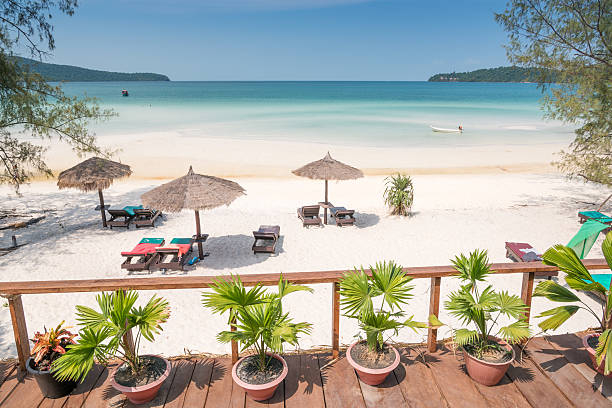
Sihanoukville 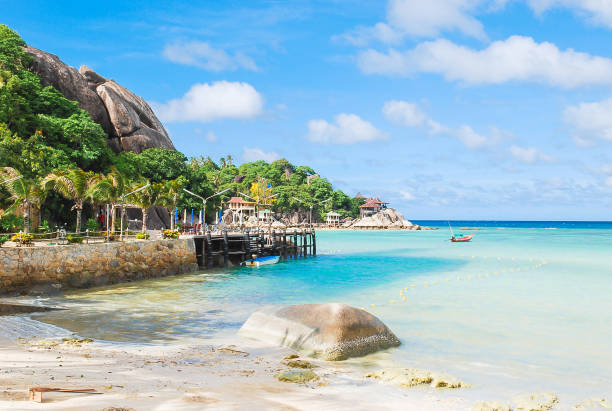
Sihanoukville -
Kampot is a peaceful Cambodian town close to the Teuk Chhou River and the Gulf of Thailand. Kep, which is nearby, is more popular. It serves as an entrance to the Bokor National Park. The calm riverfront location is Kampot's major charm. While there is a large town set back from the river, most visitors will spend most of their time enjoying the river.
The area and town are well-known for their high-quality pepper, which is exported all over the world. It is also well-known for its durian and Kampot fish sauce. Since 2017, the government and the Ministry of Culture and Fine Arts have been drafting documentation to propose Kampot's Old Town for inclusion on the UNESCO World Heritage Site list.
The majority of tourist attractions are located along the riverfront promenade or within one or two blocks of it. The "old bridge," a jumble of diverse designs and temporary components put together after its breaching during the Khmer Rouge era, and the French-built market building, which is being repaired, is the riverside's key reference points.
The picturesque hamlet of Kampot, located on a river not far from the Gulf of Thailand, is noted for its distinctive flavor of black peppercorns. The well-known Cambodian cuisine of Kampot pepper crab originated here, and a visit to the Crab Market provides a genuine taste. You may see the women wade into the water to bring in the crab baskets before being given the Kingdom's freshest cuisine.
There are also nearby shacks where you may have an accompanying drink. Explore ancient ruins in the Kampot Kampong Trach caverns, take river boating, and explore glistening waterfalls.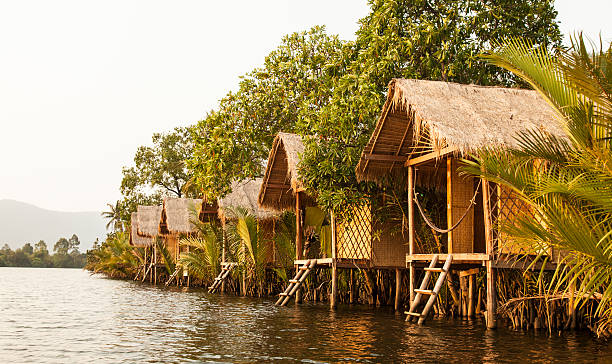
Kampot 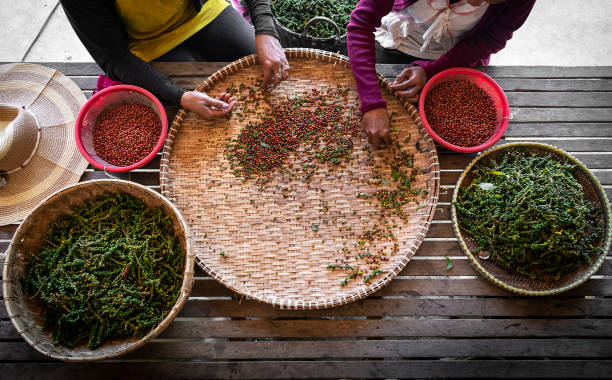
Kampot -
Kratie is one of Cambodia's eastern provinces with a smaller population that lives on the Mekong River's banks. Beyond the riverbanks is a rural location with practically no habitation and densely forested areas to let you relax. The provincial capital, Kratie, is likewise located on the banks of the famous Mekong River, which runs across the province from north to south.
A group of uncommon sweet water Irrawaddy dolphins may be found in the river near Kratie town. As a result, the dolphins are the province's and town's principal tourist attraction. The river also boasts hundreds of green islands and circular water, which draw tourists. Kratie village is peaceful yet lovely, with sandbars and large islands out front and river bends. Unlike in many other cities in Cambodia, the war years were rather kind to the French architecture and roadways in the town itself.
There are also nice-looking residences in French and Khmer styles dotted about, which adds to the pleasant atmosphere. There's also a lively market where you can see frogs being skinned (and escape first through the holes in the nets), try some excellent meals (like freshly grilled corn cakes), and generally, soak up rural Cambodian culture. The Mekong River, just north of Kratie, is home to the uncommon freshwater Irrawaddy dolphins. With just around 120 left, they are surely worth a visit.
Kratie is a good destination to spend a night or two if you are merely seeing the river villages along the Mekong or completing a complete circuit journey across the east and northeast. In the late afternoon and evening, the river scene of Kratie has a magnificent river boulevard with hundreds of food and drink booths, making this a good area to hang out and watch the folks parade past. Along the river, there are a few large concrete decks. The river road is ideal for a stroll or a jog. Take in the spectacular sunsets over the Mekong.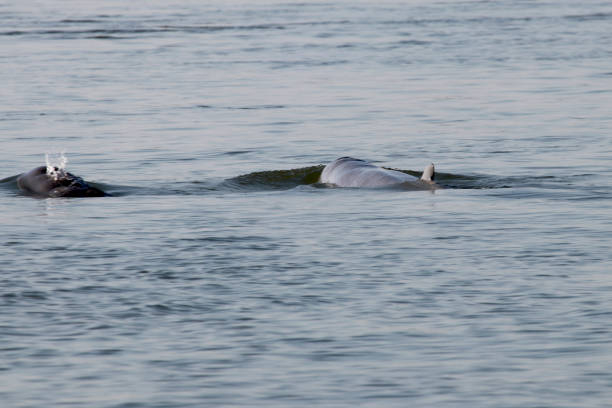
Kratie 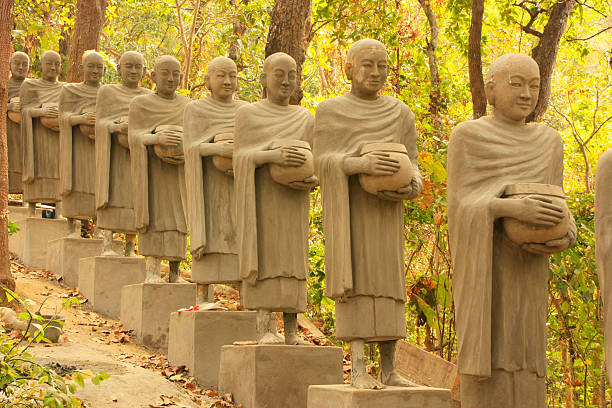
Kratie -
Preah Vihear is a large province in Cambodia's northwestern region. The capital is Phnom Tbeng Meanchey. The province is named after the Prasat Preah Vihear temple, which is unquestionably the region's hotspot. Much of the province is inaccessible and heavily wooded.
Unfortunately, massive logging enterprises degrade the natural landscape by removing vast swaths of pure tropical hardwoods. It is also one of the Kingdom of Cambodia's least inhabited provinces. This peaceful location is well-known for the Preah Vihear temple, which stands near the Thai-Cambodian border.
Preah Vihear, Cambodia's lesser-known UNESCO monument, is definitely worth venturing off the main path to explore. This beautiful temple complex, located on the Thai border, attracts fewer visitors and provides a more authentic taste of the Khmer monarchy. From its peak, visitors may enjoy breathtaking vistas.
Whatever the case may be, the region has a lot to offer people who are interested in old temple complexes and distant settlements free of tourist traps. Three of the most remarkable Angkorian legacies may be found at Preah Vihear: the mountain temple of Prasat Preah Vihear, the 10th-century city of Koh Ker, and the gigantic Preak Khan.
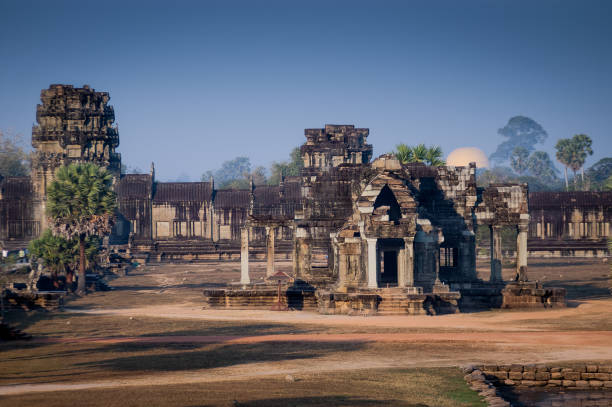
Preah Vihear 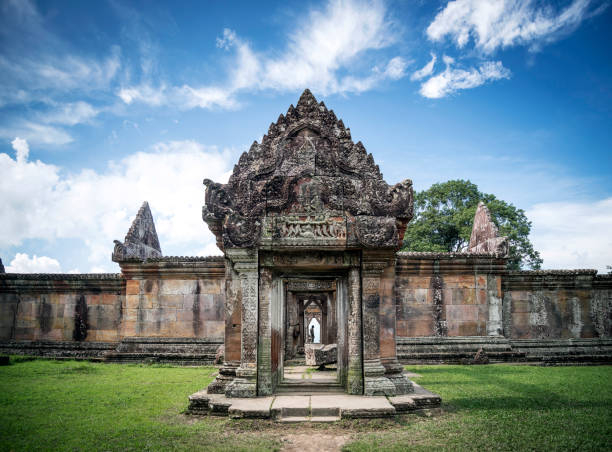
Preah Vihear -
Battambang is the capital of Battambang Province and the second-largest city in Cambodia. It was created in the 11th century. It is the historic capital of Monton Kmer and is located in the heart of Cambodia's Northwest. Until the war years, when practically all infrastructure was destroyed, it was the country's leading rice-producing province.
The name Battambang or Batdambang literally means "loss of stick," and refers to a tale about the Preah Bat Dambang Kranhoung (Kranhoung Stick King). The current population is roughly 250,000 people. It's a riverbank village with some of the country's best-preserved French colonial buildings.
These days, Battambang is a calm and attractive city. The city's major areas are located beside the Sangker River, a calm, little body of water that weaves its way through Battambang Province. It's a lovely, scenic place. The French architecture, like most of Cambodia, is an appealing feature of the city.
The town has many Angkor-style temples and Buddhist shrines. It is simple to move around on foot or by bicycle. Most public sites include statues, primarily of animals and gods, the most renowned of which is an old Khmer ruler on the way to Phnom Penh. The Central Market is also worth a look.
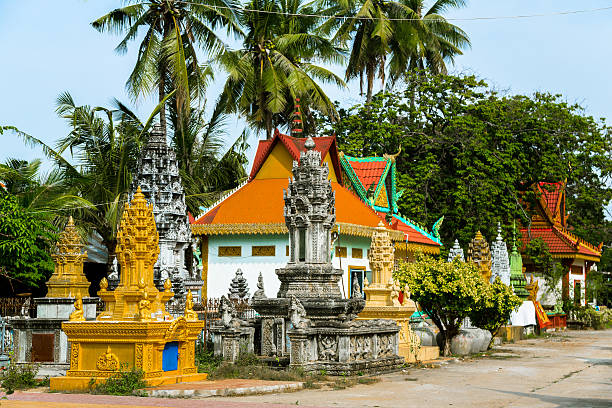
Battambang 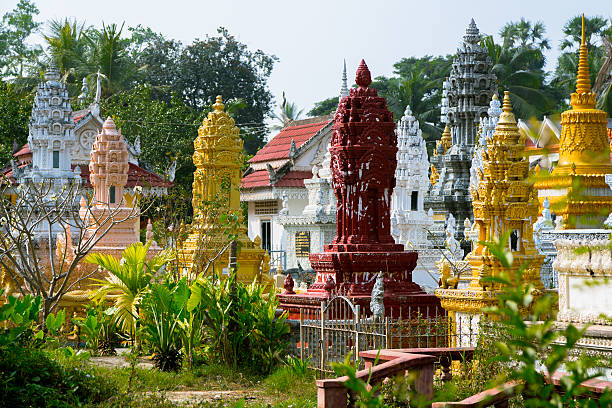
Battambang -
Ratanakiri province (also known as Banlung – its largest town) is located about 600 kilometers north-east of Phnom Penh in a rural area, sharing borders with Laos in the north and Vietnam in the east, and is home to an ethnic minority of more than 70 percent of the population. This country is well-known for its abundance of natural resources as well as its stunning natural beauty.
In Ratanakiri, you may discover a variety of topography, such as hills and mountains, plateaus, crater lakes, rivers, and waterfalls. The flora is also quite diverse, ranging from lush forests in the north, where wildlife thrives, to drier and sparser woodland in the southwest. All of these factors combine to create the excellent potential for ecotourism in Cambodia in general, and in Banlung in particular. This interesting country is regarded as one of the must-see sites for wildlife enthusiasts.
Ratanakiri province, like the rest of the country, has three distinct seasons: the rainy season from June to October, cold season from November to February, and the hot season from March to May. The chilly season, from November to February of the following year, is without a doubt the ideal time to visit Ratanakiri. However, because of the high height from seawater level, it is a little cooler than in other provinces in the nation throughout the hot season. A sorter trips to Yeak Laom Volcanic Lake offers the opportunity to see deep lakes as well as see Cambodian women doing traditional weaving.
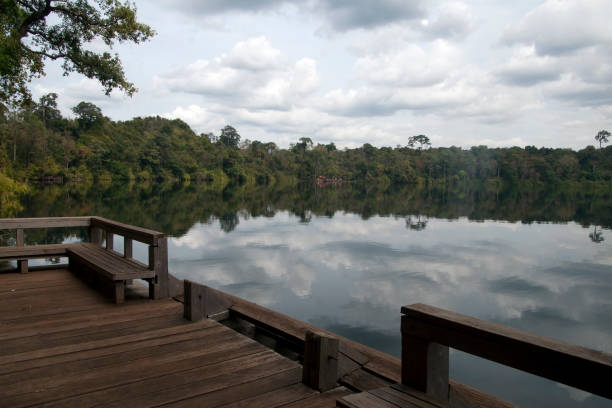
Banlung 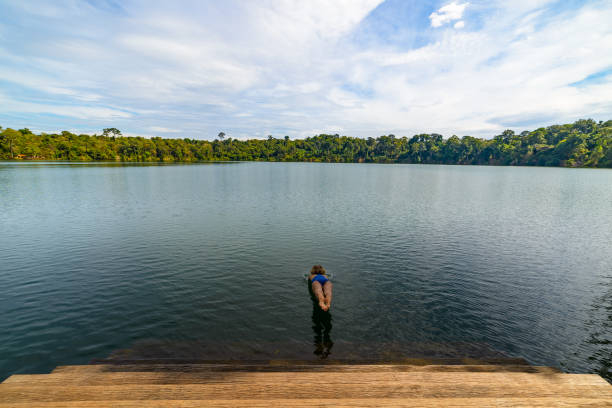
Banlung -
Mondulkiri is a Cambodian province in the east that is the most sparsely inhabited province in the country while being the biggest. Natural beauty abounds in the province, with densely wooded mountains, tremendous waterfalls, and the beautiful green undulating hills of the western side.
Mondulkiri translates as 'Meeting of the Hills,' a suitable nickname for an area of undulating hills. With only four inhabitants per square kilometer, it is the country's most sparsely inhabited province. It may be pretty chilly at night at a height of 800m, so pack something warm.Asian elephants prowl the fields and bushlands of remote Mondulkiri Province, while water buffalo and timber longhouses surround the marshes and summits of forest-clad granite rise to meet the Vietnamese border. This eastern beauty is a far cry from the rest of the country's sun-scorched plains and sweltering tropical climes, and it is steadily gaining notoriety for its second-to-none elephant conservation effort. Cultural contacts with the earthy Bunong tribespeople are also available, and ecotourism is the major engine here presently.
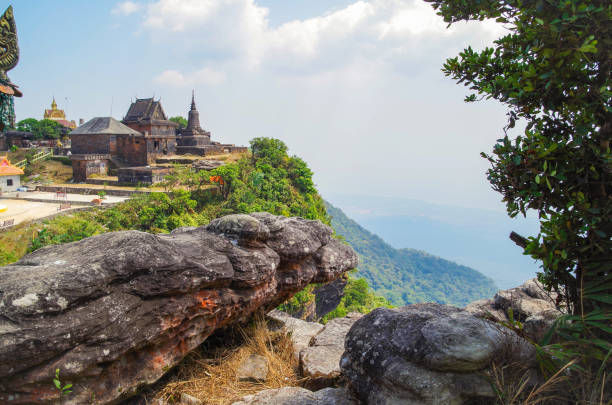
Mondulkiri 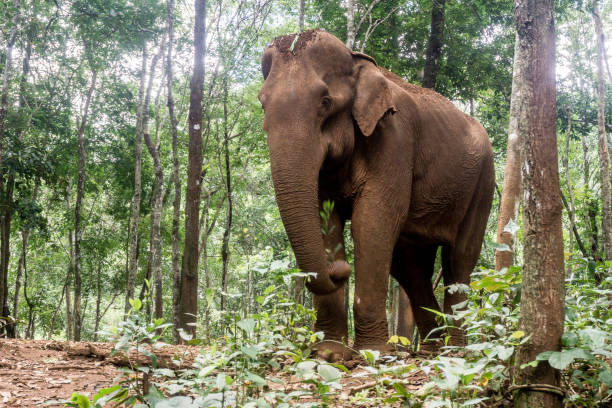
Mondulkiri -
Brief Overview of Koh Rong Island Koh Rong is an island in the Gulf of Thailand, roughly 20 kilometers from the coastal city of Sihanoukville. It takes around 2 hours to get to the island; from a distance, the saltwater is emerald jade with a length of white beach.
Koh Rong is an island in the Gulf of Thailand, roughly 20 kilometers from the coastal city of Sihanoukville. It takes around 2 hours to get to the island; from a distance, the saltwater is emerald jade with a length of white beach. Add to it the dark blue of the tropical rainforest, and you've got yourself a cool and lovely green place.
Opposite to bustling Sihanoukville, Koh Rong is a genuinely clean and quiet paradise that makes you fall in love at first sight, not only by the clear blue water, white beach, and brilliant sunshine but also by its diverse and abundant marine life. Professionals from France and Russia are planning to develop tourism in the island's primeval and animal woods.
You may simply schedule an exciting driving tour to discover the gorgeous coral reefs or rent a boat from a local fisherman to take a fishing excursion along the coast and experience the sensation of floating on the water.
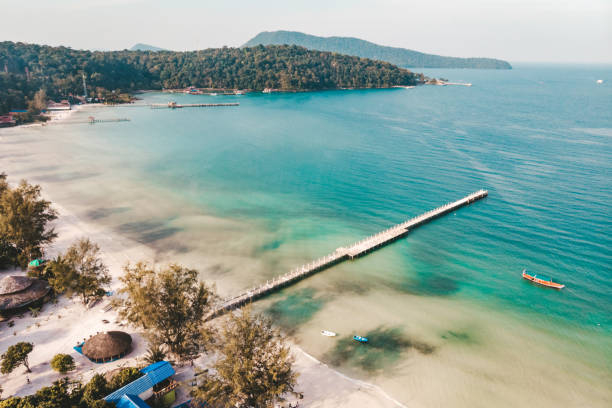
Koh Rong 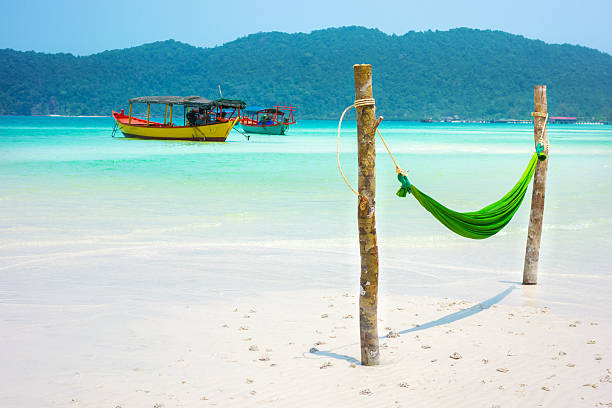
Koh Rong -
Kep City is a Cambodian municipality having the status of a province. Kep, located just a few kilometers from the border with Vietnam, was once Cambodia's most popular beach town but has since fallen on bad times (especially due to the Khmer Rouge).
Kep looks to be undergoing a resurgence, with numerous mid-range and luxury guesthouses and bungalows having just opened or been built. The seafood is inexpensive, plentiful, and excellent, notably the well-known crabs. Kep also has a large national park that covers various mountains with lush green forests.During the colonial period in 1908, the French constructed Kep City. Today, Kep is mostly popular with domestic visitors who visit the island as a vacation spot. Furthermore, Kep has excellent seafood as well as breathtaking views of the mountains and beaches. Visitors can also take in panoramic ocean views at Kep National Park, visit a butterfly preserve or see how peppers are grown organically.
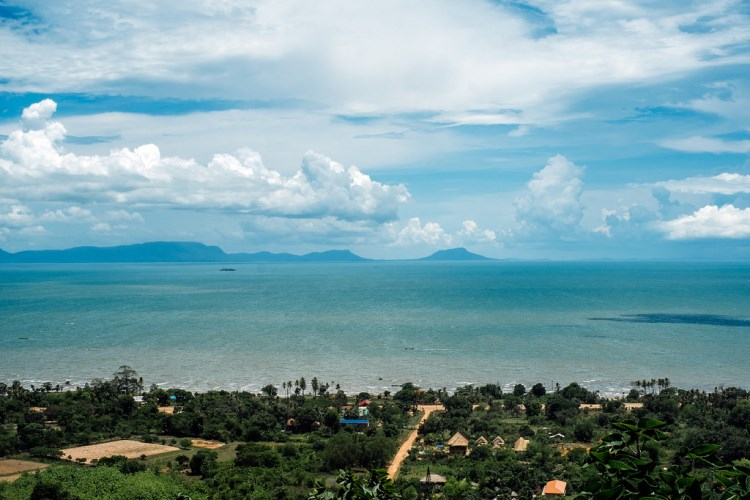
Kep 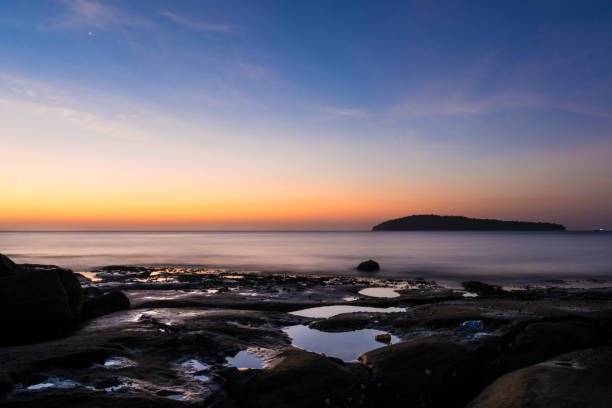
Kep















